Layers of honey cake filled with a delicious semolina buttercream: this Polish honey cake is a symphony of flavours and textures. Its best feature is that this is the kind of cake that gets only better as time passes. How many cakes taste their best on the 4th day? If you’re a fan of making ahead, you’ll love this Polish semolina cake!

A cake with many names
In Poland you may encounter this Polish honey cake under two different names: grysikowiec or miodownik. Originating from a Jewish recipe, this cake actually has a third name, too – chonek łejkech. While the third one is the Polish-Jewish name, outside of the Jewish community this cake goes mostly by one of the two Polish names.
Why two names? It’s a matter of perspective, as one of the names focuses on the honey and the other focuses on the semolina. Grysikowiec comes from grysik, the Polish word for semolina, thus means “semolina cake”. Miodownik, on the other hand, comes from the Polish word for honey, miód, and so would mean “honey cake”.

Variations of this cake recipe exist, you can also find it with plum jam spread in between the layers or with a chocolate topping. It is generally acknowledged that if it has the plum jam, the cake will mostly go by the name grysikowiec. If the cake has the chocolate layer on top, it’s most likely to be called miodownik.
The Polish honey cake I’m featuring here has neither the jam, nor the chocolate on top. I follow my Polish grandma’s recipe, and how she used to make it. She used to call it grysikowiec, which is the name I’m most familiar with. Of all the cakes of the Polish tradition, this is my very favourite. The one I’d always demand when I visited my grandma every summer.

The ingredients
Honey, semolina, milk, eggs and butter are definitely the key ingredients in this cake. You can choose any honey you like. I recommend one that has quite a strong flavour (like pine honey), rather than a more neutral one (like acacia). Bonus points if you find Polish milk – which was a very random find for me, but what prompted me to make this cake in the first place!
Given the double identity of this cake, it is useful to gather your ingredients and keep them separated – those needed in the honey cake, and those that go into the semolina cream. Butter is used in both, but the cake layers call for cold butter and the cream requires it at room temperature. Eggs are also featured in both, but the cream only calls for yolks, while you need whole eggs in the honey pastry. As usual, for a complete list of ingredients and quantities, please refer to the recipe card below.

Polish honey cake recipe
In order to optimize your time, I recommend to follow recipe directions in this order:
- Make the semolina first, as it needs to be completely cooled to be used in the buttercream.
- Make the honey pastry, which requires some bake time and some cooling time as well.
- When the semolina has cooled, make the semolina buttercream.
- When the honey cake layers have cooled you can finally assemble the cake.
I have used a 18*20 cm baking tin and ended up with 4 layers. My grandma used a slightly larger pan and her cake used to have 3 layers.

The semolina
- Combine the milk and vanilla extract in a saucepan and bring to a boil. When it boils, add the semolina stirring continuously. Simmer for 4-5 minutes until the mixture has nicely thickened. Lower the heat if it sticks to the bottom of the pan.
- Place the bowl in a cold water bath to lower its temperature. When it has cooled some, you can place it in the freezer and stir it every few minutes to speed up the cooling process.

The honey cake layers
- Mix flour, eggs, baking soda, cold butter, honey, sugar and sour cream in a food processor and blitz until combined. Stop the blades from time to time and scrape the sides of the bowl.
- If necessary, give the dough a quick knead to make a homogeneous ball.
- Crumble some dough over a piece of parchment paper, cover with a second paper and roll the dough with a rolling pin until about 2-3 mm thick.
- Cut the dough the size of the baking tin, using the bottom of the actual dish as template. Set aside and repeat until you have used your dough to make 3-4 pastry layers depending on tin size (4 in this case).
- Bake each layer individually at 200°C (390°F) for 10 minutes, and let set on a cooling rack. The pastry will slightly harden as it cools.
The semolina cream
- When the semolina has cooled, it’s time to make the buttercream. In a bowl, combine the sugar and egg yolks and whisk for a couple of minutes at medium speed. Always whisking, add the butter in chunks, little by little, until all of it has been incorporated.
- Take the semolina out of the fridge and fold it into the buttercream with a spatula. The resulting cream should be quite thick (see picture below). While the sugar melts during the mixing and the subsequent folding, the semolina makes this cream slightly gritty.

Assembling the cake
- Have a cake layer on a working surface and spoon some semolina cream over it. Spread it evenly with an angled spatula. Place the next layer over the cream and continue filling the cake trying to divide the cream in between cake layers into equal amounts. Remember to reserve some cream for the top layer, too.

- Before spreading the cream on the top layer, run the spatula around the sides of the assembled cake to even the sides and collect any extra cream that may have been pressed out.
- Spread the cream on the top and final layer and give the cake a final finish.
The perfect make-ahead cake
This Polish honey cake has one feature that makes it a total winner over other cakes, and that is its longevity. This cake is made to last, and it will get better and better as it ages! All it takes is to store it refrigerated in an airtight container, and your cake will last for up to 5 days – and on the 5th day it will taste better than on the 1st!
In fact, most cakes taste better the following day. That is because the extra time has allowed the flavours to blend and the texture to set. But many cakes also start to go stale with time. Not this one. My Polish honey cake will only get better and better as the days pass. To the point that if I have to bring it to a party, I will confidently make it a couple of days ahead.
The reason behind this feature is because the honey cake layers are basically more of a shortcrust pastry than a sponge cake layer. A soft sponge cake gets soggy after staying in contact with the filling for a few days. This honey shortcrust will get soft – which is even better! The semolina buttercream has a nice longevity, too, and even the top layer will not look stale if stored correctly.
In short, not only does this cake behave great after a couple of days, it actually tastes even better!


More from my grandma’s cookbook
As a Polish woman in Italy – a woman passionate about cooking – my mom devoted all of her free time to learn all about Italian cuisine. So whenever she needed to cook something Polish, she’d turn to her mother’s recipes. Which she passed on to me. Some of them even made it to this blog! So here are some other Polish recipes from my collection:
- My grandma’s chicken livers with onion are one of my absolute favourite recipes, and definitely the one that most reminds me of my Babcia. This is as authentic as it can be: it’s simple, made with cheap ingredients, and drenched in butter.
- Polish apple cake Fale Dunaju is not my favurite Polish cake (it’s grysikowiec, now you know that), but it definitely is a favourite twist to apple cake. Because it has cocoa. And you see the waves of the Danube in the slices. I’m serious, go ahead and read the recipe.
- Polish tomato soup “Pomidorowa” is my favourite Polish soup – and I don’t love many of them, unfortunately. Polish soups require a bit of an acquired taste to be fully appreciated, but pomidorowa is so easy to love and so full of flavour. My grandma used to make it with canned tomatoes from Italy. The best tomatoes, if you asked her.
- Crustless ricotta cheesecake with peaches, inspired by Polish sernik, is another one of those variations to one recipe – sernik, Polish cheesecake – that has been largely developed into many varieties.
- Bonus recipe: apple and vodka cocktail “szarlotka”. I didn’t learn to make this from my grandma’s recipe book, but I did drink a fair share of these with my godmother. While my grandma was in the kitchen making food for us, and we took care of the aperitivo. Because I’m still half Italian, right? You gotta prepare for the main meal with a cocktail, right?
Pin my Polish honey cake recipe for later use!
Polish honey cake with semolina buttercream
Equipment
- 18*20 cm (7*8 in) baking tin
- Mixing bowls
- Electric mixer
- Pot
- Spatula and spoons
- Cooling rack
Ingredients
For the honey cake layers
- 500 g flour
- 2 eggs
- 1 tsp baking soda
- 100 g honey
- 50 g butter cold
- 100 g sugar
- 100 g sour cream
For the semolina buttercream
- 1 l milk
- 2 tbsp vanilla extract
- 140 g semolina
- 350 g butter room temperature
- 400 g sugar
- 4 egg yolks
Instructions
- Start by making the cream, as it needs to be completely cooled to be used. Combine the milk, and vanilla extract in a saucepan and bring to a boil. Add the semolina stirring continuously. Simmer for 4-5 minutes, until the mixture has nicely thickened. Lower the heat if it sticks to the bottom of the pan.
- Place the bowl in a cold water bath to lower its temperature. When it has cooled some, you can place it in the freezer and stir it every few minutes to speed up the cooling process.
- To make the honey cake layers, combine all the ingredients in a food processor and blitz until incorporated. Stop the blades from time to time to scrape the sides of the bowl, and if necessary give the dough a quick knead to make a homogeneous ball.
- Crumble some dough over a piece of parchment paper, cover with a second paper and roll the dough with a rolling pin until about 2-3 mm thick. Cut the dough the size of the baking tin, using the bottom of the actual dish as template. Set aside and repeat until you have used your dough to make 4 pastry layers.
- Bake each layer individually at 200°C (390°F) for 10 minutes, and let set on a cooling rack. The pastry will slightly harden as it cools.
- When the semolina has cooled, it's time to make the buttercream. In a bowl, combine the sugar and egg yolks and whisk for a couple of minutes at medium speed. Always whisking, add the butter in chunks, little by little, until all of it has been incorporated.
- Take the semolina out of the fridge and fold it into the buttercream with a spatula.
- Have a cake layer on a working surface and spoon some semolina cream over it. Spread it evenly with an angled spatula. Place the next layer over the cream and repeat. Remember to reserve some cream for the top layer, too. Before spreading cream on the top layer, slide the spatula along the sides of the cake to give the sides an even finish and remove any excess cream that may have been pushed out.



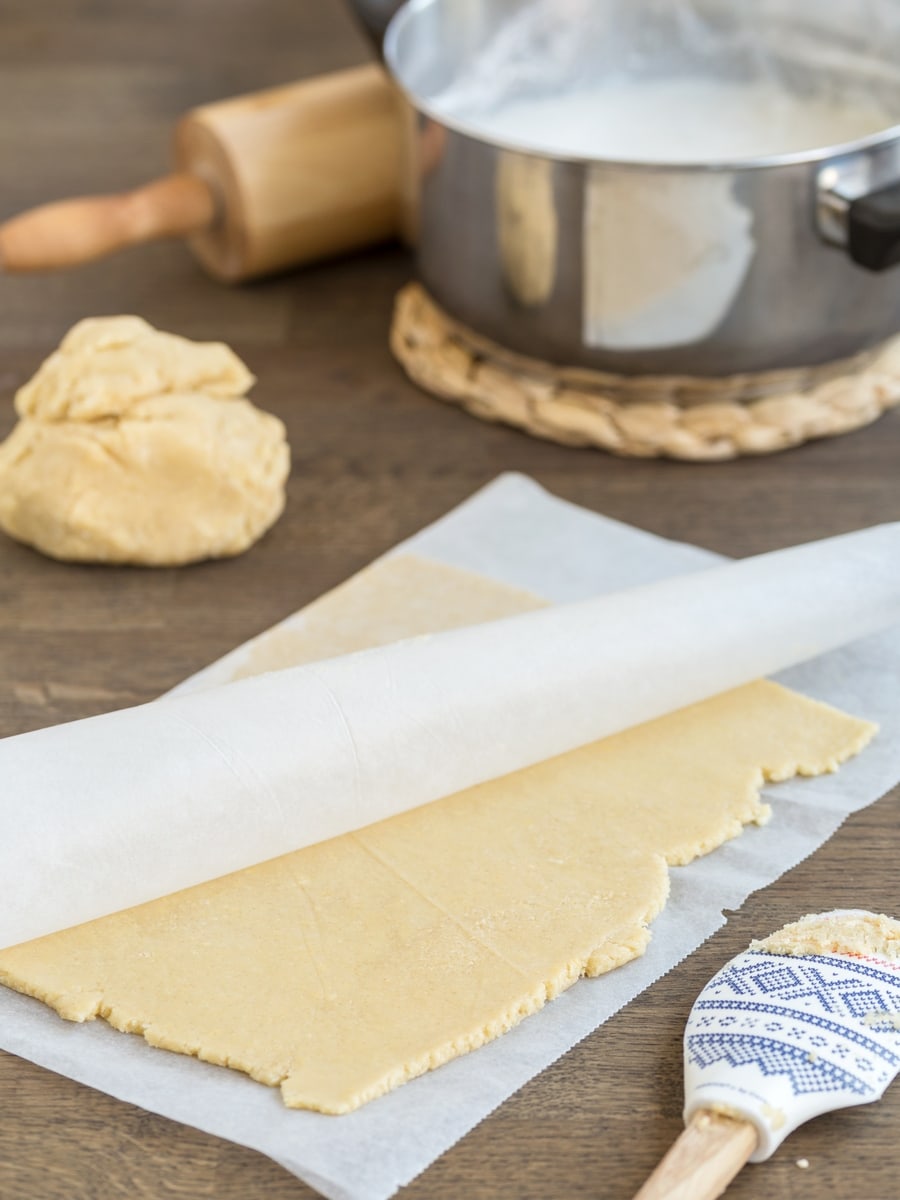



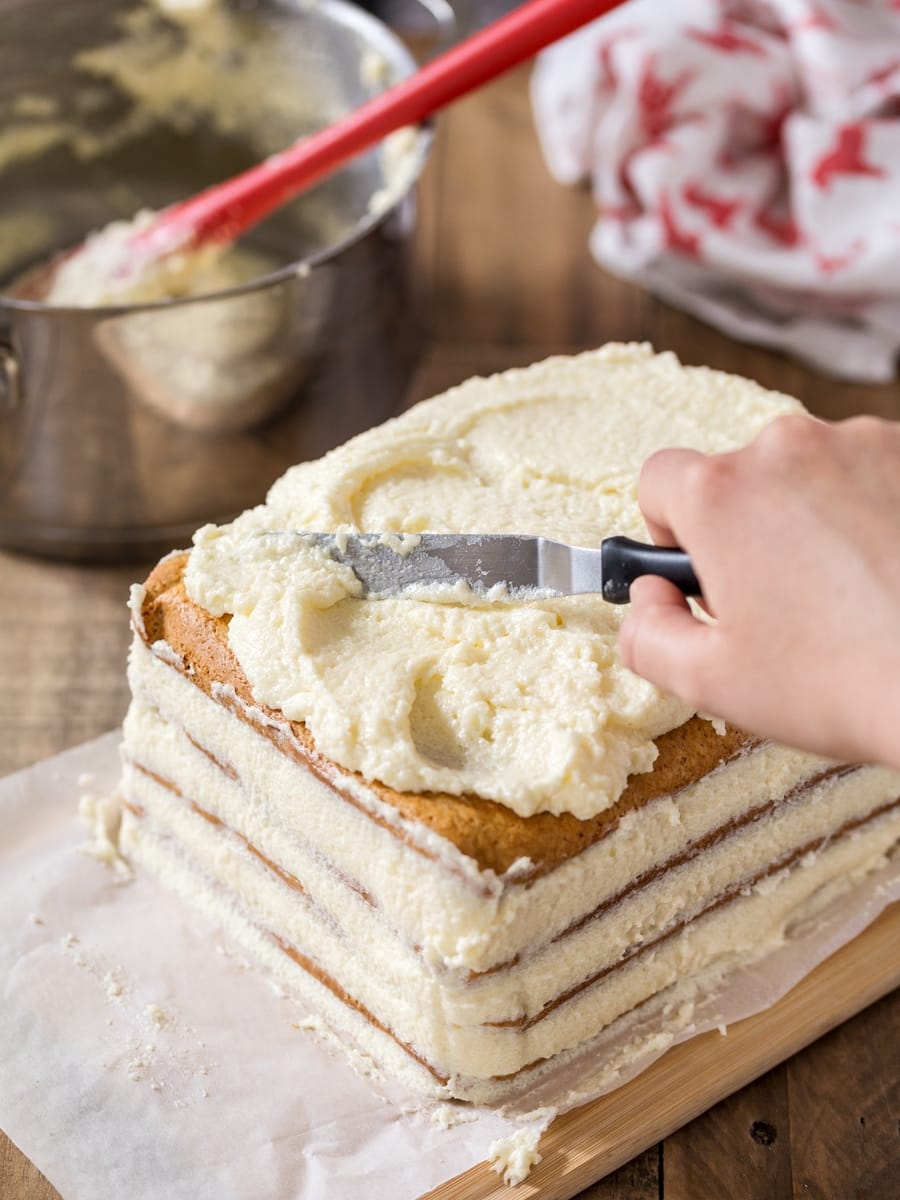
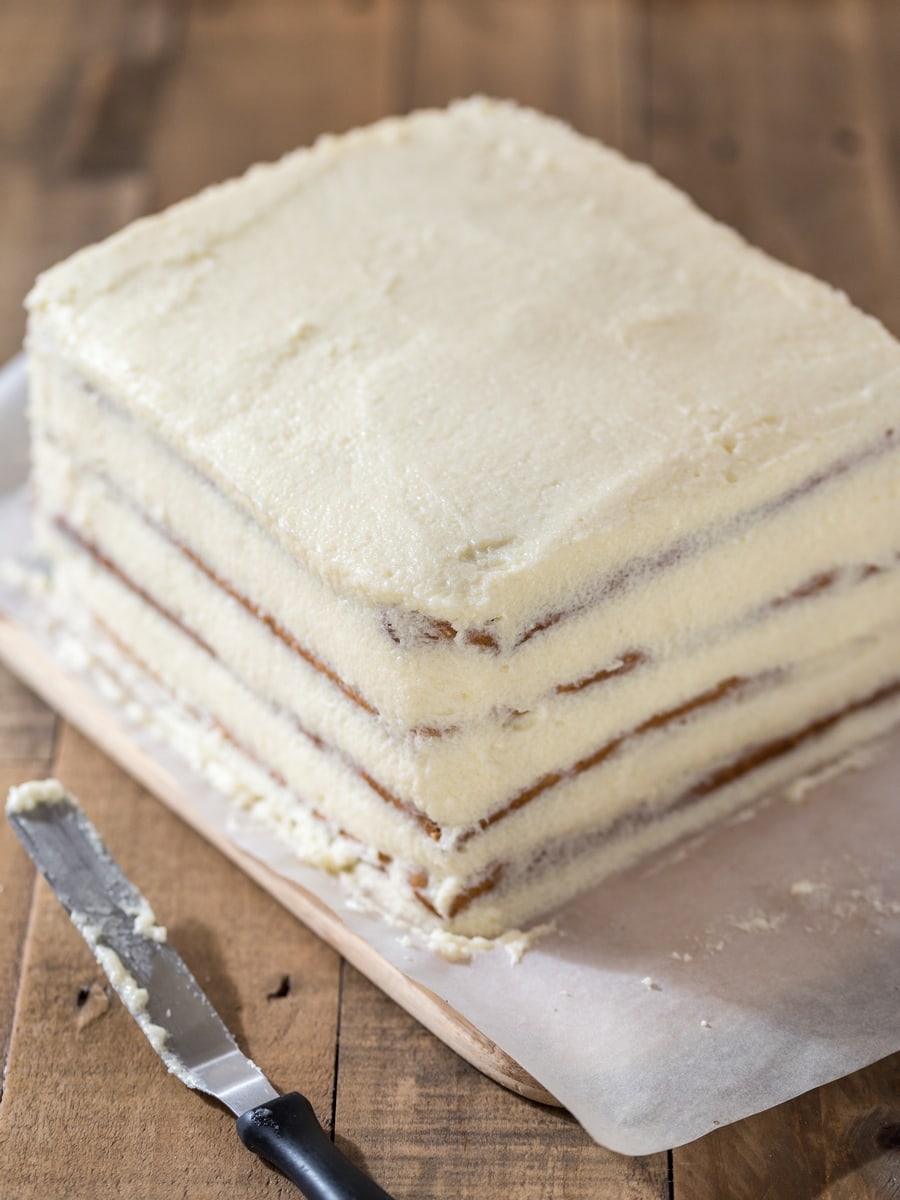


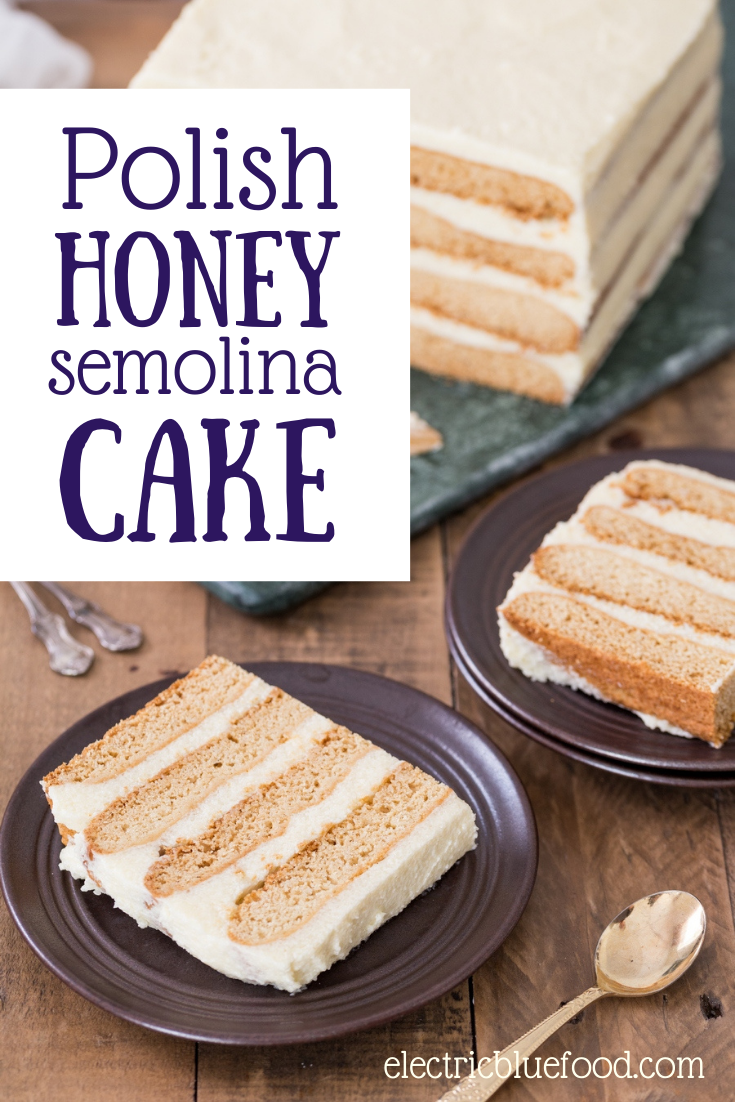
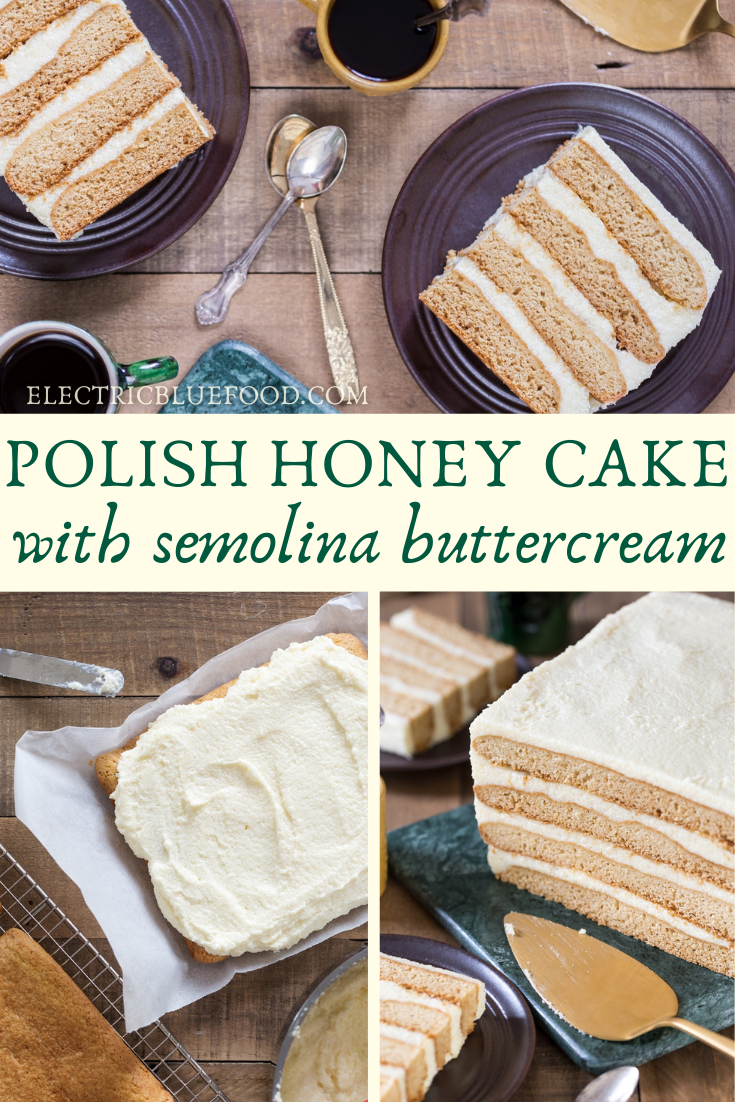

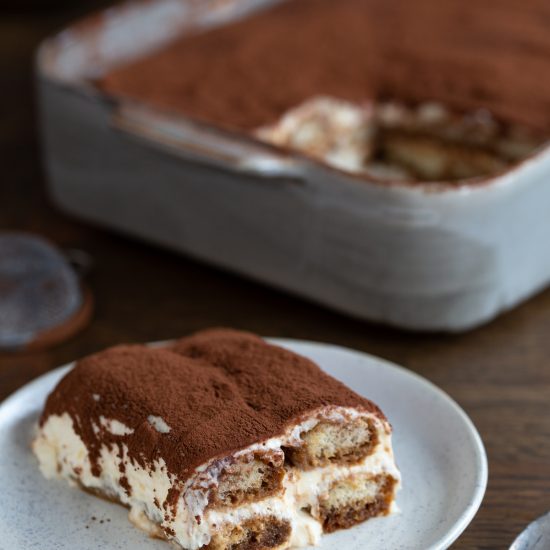

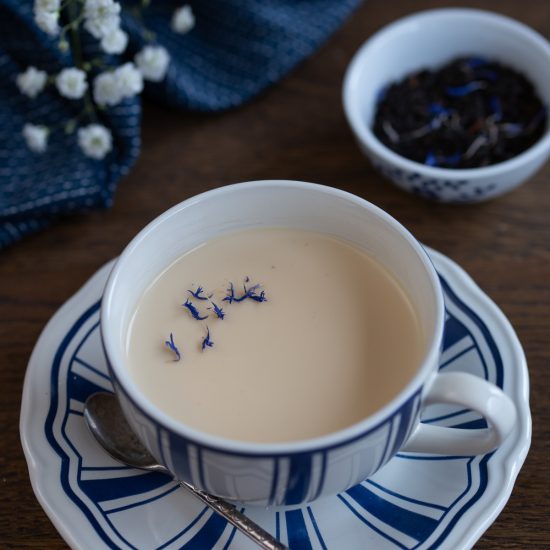
I love the ratio of cake to cream on this cake – and wow – this is my first time hearing about semolina cream. Such a gorgeous tea time treat!
Hi Shashi! I have found this cake with thinner layers of both cream and cake, but this is how my grandma used to make it and I love it with this ratio! Thank you for your comment.
This is such a gorgeous cake. The layers turn out better than any cake I’ve made before.
This is great to hear, Laura! Glad it did not disappoint.
First of all, I didn’t know you can make cake frosting with semolina! This idea is creative – just wow! The cake looks delicious; though I rarely make cakes, I will love to try this!
Hi Kechi! Indeed you can, and the result is surprisingly delicious. I hope you get a chance to give this semolina cream cake a try.
I ate so much of this when I was in Gdansk. I will definitely be making it myself.
Hi Dannii! How wonderful you got to taste the real thing in Poland!
This looks wonderful. I am from Hungary and this looks similar to the Hungarian Honey Cream Slices or Mezes Kremes / Mezes Zserbo in Hungarian. I love it. Such a small world.
Hi Emese! How interesting to hear! These cakes must be related from the times of the Austro-Hungarian empire.
What size is the baking pan?
Hi Monika! Mine’s 26*20 cm, it was from the Drommar series from Ikea. Anything around that size should work!
Eva,
Could you tell me why you say this is a Jewish Polish cake? I am a cookbook author and I believe it is but the recipe seems to be everywhere. Would it be possible to talk with you? Are you on What’s App?
Hi Joan, This cake also goes by the name chonek łejkech which is Jewish-Polish.
RAW egg yolk in buttercream!???
Yep, just like in traditional tiramisù. If you are concerned about salmonella, you can use pasteurized, they’re becoming more and more popular and are available in bottles at the supermarket.